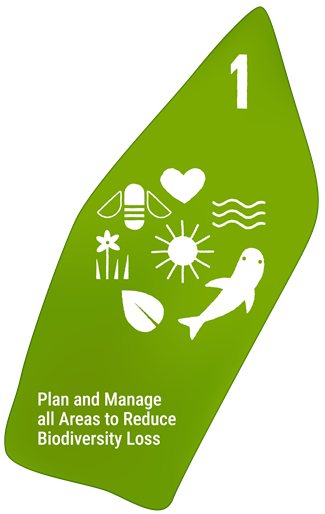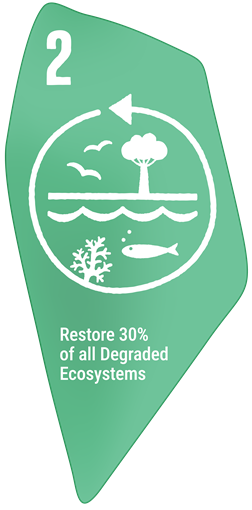
World Water Day-- 22 March 2024
World Water Day celebrates water and inspires action to tackle the global water crisis. A core focus of World Water Day is to support the achievement of Sustainable Development Goal (SDG) 6: water and sanitation for all by 2030.
Key messages for World Water Day 2024
- Water can create peace or spark conflict. When water is scarce or polluted, or when people struggle for access, tensions can rise. By cooperating on water, we can balance everyone’s water needs and help stabilize the world.
- Prosperity and peace rely on water. As nations manage climate change, mass migration and political unrest, they must put water cooperation at the heart of their plans.
- Water can lead us out of crisis. We can foster harmony between communities and countries by uniting around the fair and sustainable use of water – from United Nations conventions at the international level, to actions at the local level.
Read the statement by David Cooper, Acting Executive Secretary of the Convention on Biological Diversity:
"Water has the power or create peace or provoke conflict. When there is lack of water, or lack of access to it, tensions can rise. However, by cooperating and ensuring access to clean water, we can achieve stability. To do that, we need water to be center stage in global planning.
Over two billion people are living without safely managed drinking water and roughly half of the world’s population is still experiencing severe water scarcity for at least part of the year.
Our water supply depends on water-related ecosystems, whose functioning depends on biodiversity. These ecosystems also regulate climate, reduce impacts of natural hazards, and provide habitats for fish species that feed hundreds of millions of people worldwide.
The Kunming-Montreal Global Biodiversity Framework, or the Biodiversity Plan, sets out the urgent actions needed to halt and reverse biodiversity loss by 2030. Its four goals aim to Protect & Restore Nature, to Prosper with Nature, to Share Benefits Fairly and to Invest & Collaborate for Nature.
Each of the Plan’s 23 targets are relevant to water. Some aim to protect and restore critical habitats, reduce pollution, and minimize the impacts of invasive alien species, others ensure areas under agriculture, aquaculture, fisheries, and forestry are managed sustainably. Other targets call for the values of biodiversity – including water-related values – to be integrated into policies across all government ministries, economic sectors, and all facets of society. These actions must be taken through a gender-responsive approach, while also ensuring the full and effective participation of indigenous peoples and local communities.
The 16th meeting of the Conference of the Parties to the Convention on Biological Diversity will convene in Cali, Colombia in October 2024 under the theme “Peace with nature”. It is time to make peace among people and peace with the planet.
This World Water Day, let us work together to promote water for peace and peace with nature."
More Information:
Marine and Coastal Biodiversity
Related Targets in The Biodiversity Plan
Ensure that all areas are under participatory, integrated and biodiversity inclusive spatial planning and/or effective management processes addressing land- and sea‑use change, to bring the loss of areas of high biodiversity importance, including ecosystems of high ecological integrity, close to zero by 2030, while respecting the rights of indigenous peoples and local communities.
Why is this target important?
Land-use and sea-use change are major direct drivers of biodiversity loss. Land-use change has had the largest relative negative impact on terrestrial and freshwater ecosystems since 1970, with agricultural expansion being the most widespread form of land-use change. Marine and coastal ecosystems have been significantly affected by human activities as well, with research demonstrating increasing cumulative impacts of human activities in more than 60 per cent of the ocean.
Increasing demands and conflicting uses of land, inland water and ocean space and resources underscore the need for cross-sectoral approaches that allow for the consideration of multiple interests, values and types of use. Integrated spatial planning and/or effective management processes allow countries to analyze and then effectively allocate the spatial and temporal distribution of activities in each environment to achieve various social, ecological and economic objectives. Integrated and participatory spatial planning helps bring together all stakeholders for a particular space and thereby ensure the prioritization and proper allocation of various activities and thereby balance the need to safeguard nature, while advancing sustainable socioeconomic development and ensuring food security and human well-being. The ecosystem approach as well as the many examples of guidance and experience in implementing this approach also provide a strong basis for this target.
Links to other elements of the Biodiversity Plan and other frameworks and processes.
- Actions to reach Target 1 should take into account all of the considerations for implementation identified in section C of the Kunming-Montreal Global Biodiversity Framework.
- Progress towards this target will support the attainment of goals A and B of the Kunming-Montreal Global Biodiversity Framework. In addition, progress towards this target will directly support the attainment of targets 2, 3, 5, 10 and 12 of the Framework. Conversely, progress towards targets 14, 19, 20, 21, 22 and 23 will help to reach Target 1.
- Target 1 addresses issues that were previously addressed by Aichi Biodiversity Target 5.
- Elements of Target 1 are also addressed in the targets of the Sustainable Development Goals, including targets 14.2, 15.1, 15.2, 15.5 and 15.9.

Click here for more information about Target 1
Ensure that by 2030 at least 30 per cent of areas of degraded terrestrial, inland water, and coastal and marine ecosystems are under effective restoration, in order to enhance biodiversity and ecosystem functions and services, ecological integrity and connectivity.
Why is this target important?
Habitat degradation is the result of human-induced processes that result in a decline in biodiversity, ecosystem functions and services, and resilience and can occur in terrestrial, freshwater or marine and coastal ecosystems. Because degradation can take many forms and be measured in different ways, there are varying estimates on the amount of degraded habitat globally. However, estimates suggest that between 20 and 40 per cent of the global land area alone could be considered degraded, affecting the well-being of at least 3.2 billion people
The main direct drivers of land degradation are the expansion of crop and grazing lands into natural areas, unsustainable agricultural and forestry practices, climate change, and, in specific areas, urban expansion, infrastructure development and extractive industry. Habitat loss through transformation and the decline in the suitability of the remaining habitat through degradation are the leading causes of biodiversity loss. Ecosystems affected by land degradation mainly include forests, rangelands and wetlands. Wetlands are particularly degraded, with 87 per cent lost globally in the last 300 years, and 54 per cent since 1900. Marine ecosystems are experiencing high rates of habitat loss and degradation as well, particularly along coastlines, mangrove forests and coral reefs.
Links to other elements of the Biodiversity Plan and other frameworks and processes.
- Actions to reach Target 2 should take into account all of the considerations for implementation identified in section C of the Kunming-Montreal Global Biodiversity Framework.
- Progress towards this target will support the attainment of goals A and B of the Kunming-Montreal Global Biodiversity Framework. In addition, progress towards this target will directly support the attainment of targets 3, 8, 11 and 12 of the Framework. Conversely, progress towards targets 1, 14, 19, 20, 21, 22 and 23 will help to reach Target 2.
- Target 2 addresses issues that were previously addressed by Aichi Biodiversity Target 15
- Elements of Target 2 are also addressed in the targets of the Sustainable Development Goals, including targets 6.6, 14.2, 15.1 and 15.3
- Target 2 also links to processes under the United Nations Convention to Combat Desertification (UNCCD) related to land degradation neutrality and associated target setting, the Global Forest Goals and targets of the United Nations Strategic Plan for Forests developed under the United Nations Forum on Forests, Ramsar Resolution VII.17 as well as to the United Nations Decade on Ecosystem Restoration.

Ensure and enable that by 2030 at least 30 per cent of terrestrial and inland water areas, and of marine and coastal areas, especially areas of particular importance for biodiversity and ecosystem functions and services, are effectively conserved and managed through ecologically representative, well-connected and equitably governed systems of protected areas and other effective area-based conservation measures, recognizing indigenous and traditional territories, where applicable, and integrated into wider landscapes, seascapes and the ocean, while ensuring that any sustainable use, where appropriate in such areas, is fully consistent with conservation outcomes, recognizing and respecting the rights of indigenous peoples and local communities, including over their traditional territories.
Why is this target important?
Land-use and sea-use change are major direct drivers of biodiversity loss. Land-use change has had the largest relative negative impact on terrestrial and freshwater ecosystems since 1970, with agricultural expansion being the most widespread form of land-use change. Marine and coastal ecosystems have been significantly affected by human activities as well, with research demonstrating increasing cumulative impacts of human activities in more than 60 per cent of the ocean.
Increasing demands and conflicting uses of land, inland water and ocean space and resources underscore the need for cross-sectoral approaches that allow for the consideration of multiple interests, values and types of use. Integrated spatial planning and/or effective management processes allow countries to analyze and then effectively allocate the spatial and temporal distribution of activities in each environment to achieve various social, ecological and economic objectives. Integrated and participatory spatial planning helps bring together all stakeholders for a particular space and thereby ensure the prioritization and proper allocation of various activities and thereby balance the need to safeguard nature, while advancing sustainable socioeconomic development and ensuring food security and human well-being. The ecosystem approach as well as the many examples of guidance and experience in implementing this approach also provide a strong basis for this target.
Links to other elements of the Biodiversity Plan and other frameworks and processes.
- Actions to reach Target 1 should take into account all of the considerations for implementation identified in section C of the Kunming-Montreal Global Biodiversity Framework.
- Progress towards this target will support the attainment of goals A and B of the Kunming-Montreal Global Biodiversity Framework. In addition, progress towards this target will directly support the attainment of targets 2, 3, 5, 10 and 12 of the Framework. Conversely, progress towards targets 14, 19, 20, 21, 22 and 23 will help to reach Target 1.
- Target 1 addresses issues that were previously addressed by Aichi Biodiversity Target 5.
- Elements of Target 1 are also addressed in the targets of the Sustainable Development Goals, including targets 14.2, 15.1, 15.2, 15.5 and 15.9.

Click here for more information about Target 3
Enhance Biodiversity and Sustainability in Agriculture, Aquaculture, Fisheries, and Forestry
Ensure that areas under agriculture, aquaculture, fisheries and forestry are managed sustainably, in particular through the sustainable use of biodiversity, including through a substantial increase of the application of biodiversity friendly practices, such as sustainable intensification, agroecological and other innovative approaches contributing to the resilience and long-term efficiency and productivity of these production systems and to food security, conserving and restoring biodiversity and maintaining nature’s contributions to people, including ecosystem functions and services.
Why is this target important?
Agriculture, aquaculture, fisheries and forestry are globally important production systems that have varying impacts on ecosystems and biodiversity. The variety and variability of animals, plants and microorganisms used in these systems is an important aspect of biodiversity. Further, in many countries, activities associated with these production systems are important elements of human well-being and economic activity. However, the increasing demand for food, fibre and fuel is leading to increasing losses of biodiversity and ecosystem services, making sustainable management in these systems an urgent requirement. On the other hand, sustainable management not only contributes to biodiversity conservation but can also deliver benefits to production systems in terms of ecosystem services such as soil fertility, erosion control, enhanced pollination and reduced pest outbreaks, as well as contributing to the well-being and sustainable livelihoods of people engaged in agriculture, aquaculture, fisheries and forestry activities.
Links to other elements of the Biodiversity Plan and other frameworks and processes.
- Actions to reach Target 10 should take into account all of the considerations for the implementation identified in section C of the Kunming-Montreal Global Biodiversity Framework.
- This target will contribute to the attainment of goals A and B of the Kunming-Montreal Global Biodiversity Framework. Further progress towards this target will facilitate the attainment of targets 2, 4, 6, 7, 8, 9, 11 and 16. Conversely, the attainment of this target will be facilitated by actions to reach targets 1, 14, 17, 19, 20, 21, 22 and 23.
- Target 10 addresses issues previously covered by Aichi Biodiversity targets 6 and 7
- Elements of Target 10 are also addressed in the targets of the Sustainable Development Goals, including targets 2.3, 2.4, 12.1, 12.2, 14.7 and 15.2.
